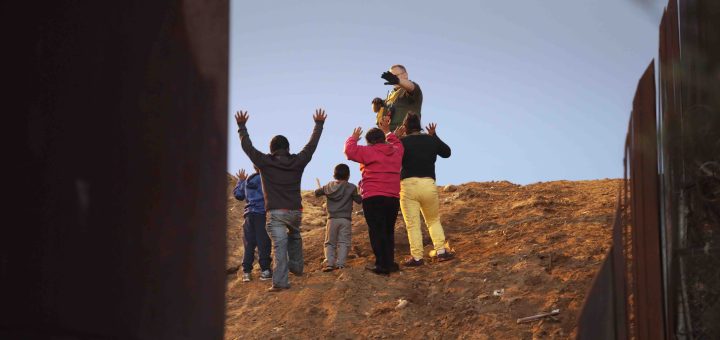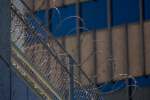Asylum Seeker With Gunshot Wound to Head Placed in Isolation & Given Ibuprofen by ICE

Members of the migrant caravan turn themselves in to a U.S. Border Patrol agent after climbing over the U.S.-Mexico border fence on December 3, 2018 while crossing into San Diego, CA from Tijuana, Mexico. Photo by John Moore/Getty Images
For months at a US immigration detention center, Rolando, a Guatemalan asylum seeker, sought medical attention for his frequent bloody eyes, ears and nose or dizzy spells. Instead of getting him medical assistance, staff usually just tossed him some ibuprofen.
The over-the-counter anti-inflammatory drug wasn’t much help. In 2016, Rolando was shot in the head and left for dead. While he survived, he was forced to go into hiding and eventually fled his home country. He didn’t have the time or money for medical care – allegedly removing the bullet himself – and didn’t know that his unbearable headaches and bleeding were the result of a possible brain hemorrhage.
“I feared I was going to die,” Rolando, who asked not to use his full name due to fears of persecution, told the Guardian. “I thought in this country, there is really good medical care … but I wasn’t getting any treatment.”
Instead, when the Indigenous man presented himself at the San Ysidro port and was taken to the Otay Mesa detention center in San Diego earlier this year, he was put into solitary confinement. ICE personnel, who didn’t know what was wrong with him, believed isolation was appropriate. Alone in the dark for an uncertain amount of days, he did not have access to medical staff.

“I didn’t even know what was night and what was day,” he said. “I was sick already, but I was starting to get worse … Nobody was coming to see me.”
After months in the facility, Rolando did visit the facility’s health center and was transferred to the emergency room multiple times, with one ER doctor writing a letter saying that the man was a “serious patient” with a “significant complexity of risk.” However, ICE repeatedly refused requests for his release.
For some time, the pain was so agonizing that he considered self-deporting to Guatemala, even knowing he would be killed.

“‘I’m gonna die here or in Guatemala, so I would at least rather go to my home country … I just can’t take it anymore,’” he’d think to himself.
In September, after Rolando’s lawyers made a third request for his release, he was able to leave custody – but only after his legal representation, Al Otro Lado, found a way to cover the $5,000 bond standing in the way of his freedom.
Currently, he is awaiting an asylum hearing that’s scheduled for next week. If Rolando is forced to return to Guatemala, he fears his days are numbered. An orphan, Rolando’s father was murdered after he resigned from the armed forces and became a supporter of the pro-Indigenous movement in the ‘90s. His mother passed away soon after from the trauma, he said. Rolando, just an infant, was taken away from his siblings and brought to an orphanage.

In his homeland, he doesn’t have family – just attackers, who he believes killed his father, that want to take his life.
As the Trump administration works to make the process of immigration more burdensome for those seeking asylum, Rolando said he wants the government to understand that asylum seekers come to the U.S. because they are out of options.
“When you’re asking for asylum, you’re swearing to tell the whole truth and nothing but the truth. I am telling the truth,” he said.
